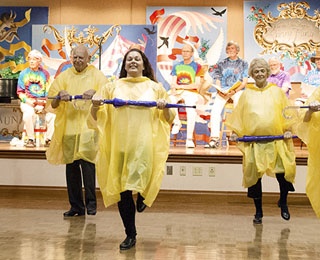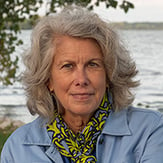Published: July 11, 2016
 “I could have danced all night,” Julie Andrews sang in My Fair Lady. But in reality, she has danced all her life. Turns out dancing isn’t just for fun. It’s also a healthy activity for both body and mind, according to Andrews and the medical pros too.
“I could have danced all night,” Julie Andrews sang in My Fair Lady. But in reality, she has danced all her life. Turns out dancing isn’t just for fun. It’s also a healthy activity for both body and mind, according to Andrews and the medical pros too.
“Depending on the style, you can improve your heart health, joint mobility, strength, balance/coordination, and an overall sense of well-being, making dance good for most everyone,” says physical therapist Ross Brakeville.
Many Life Plan Communities recognize the physical and mental benefits of dancing, and offer a variety of dance classes and dance activities for residents. Programs are adapted for people with limited mobility, and others are disease-specific, such as Dance for PD® for those with Parkinson’s disease.
Kendal is On the Move
Every Sunday residents, and occasionally staff, gather in Kendal at Oberlin’s main auditorium for English Country Dancing. The requirements are simple, explains Judy Cook. “No experience or partner is necessary, and no costume – most of us wear jeans,” says Judy, who heads up the group with her husband, Dennis.
Sometimes the dancing is accompanied by live music from Kendal and Oberlin College musicians. English Country dancing music is elegant and melodic, and adds to the flirtatious air as dancers look into each other’s eyes.
“It is the most fun. You are remembering, and learning, and executing patterns of movement. We go home humming the tunes,” Judy says.
Also at Kendal is a tap dancing class, which is held twice a week. Tap dancing helps residents improve balance, and core and lower body strength.
“We have an 85-year-old resident who struggled with balance. It was hard for him to pick up one leg. Now he is stable and able to do those things, and continues to get stronger,” says Saun Howard, fitness instructor.
Tap dancing also improves memory because dancers have to remember a sequence of steps as they dance. The dancers also perform at the annual Spring Fling. This year they tapped their way through two renditions of “Tiptoe through the Tulips.”
Kendal’s swimming pool was closed for retiling this spring, and the fitness department decided to fill the void with a second tap dancing class. They called it “lower extremity strength and balance” for fear its real name – chair tap dancing – might discourage participation.
Not only did residents join in, but they reaped physical benefits. Saun tested the participants before and after the 6-week session to see how long they could stand on one leg. “Most everyone doubled their time, and one person quadrupled her time,” Saun says.
A chair tap dancing class will soon be added to the permanent schedule.
And residents don’t have to purchase tap shoes, thanks to a local dance studio that donates gently used shoes.
What about Other Dances?
According to research presented by the American Heart Association’s Epidemiology/Lifestyle 2016 Scientific Sessions, older Latinos who didn’t exercise made big improvements when they enrolled in salsa classes.
According to an article published in Time Magazine:
“The researchers teamed up with a dance instructor, Miguel Mendez, to create a Latin dance program for older adults they called BAILAMOS: a mix of merengue, cha cha, bachata and salsa. They recruited 57 people, all sedentary, Spanish-speaking Latinos around age 65, and assigned them to a program for four months. Some took the dance classes, which met twice a week for an hour, while others enrolled in a health education program, which served as the control group.”
The result: While both groups increased their physical activity and mobility, the dancers saw more improvements.
There are lots of other types of dancing to choose from, including square dancing, ballroom dancing, hip-hop, even belly dancing. In addition to taking classes at a dance studio, many health, community and senior centers offer classes and programs.
How to Get Started
First, if you have a medical condition, are overweight or have not been physically active, talk to your doctor first.
Other suggestions include:
- Drink plenty of water before, during and after dancing;
- Wear comfortable, sturdy shoes appropriate for the style of dance;
- Watch the instructor and other dancers before trying it yourself.
Watching others is good advice, physically and mentally. Many people shy away from dancing because they have never danced and fear making a mistake. Start out an observer, and you might be surprised what happens next.
Says Judy Cook, “I’m always encouraging people to come and watch.”
In addition to dance classes, Kendal at Oberlin offers a wide range of fitness programs. Check out the options.

In the past, Molly Kavanaugh frequently wrote about Kendal at Oberlin for the Cleveland Plain Dealer, where she was a reporter for 16 years. Now we are happy to have her writing for the Kendal at Oberlin Community.
About Kendal at Oberlin: Kendal is a nonprofit life plan community serving older adults in northeast Ohio. Located about one mile from Oberlin College and Conservatory, and about a 40-minute drive from downtown Cleveland, Kendal offers a vibrant resident-led lifestyle with access to music, art and lifelong learning.





